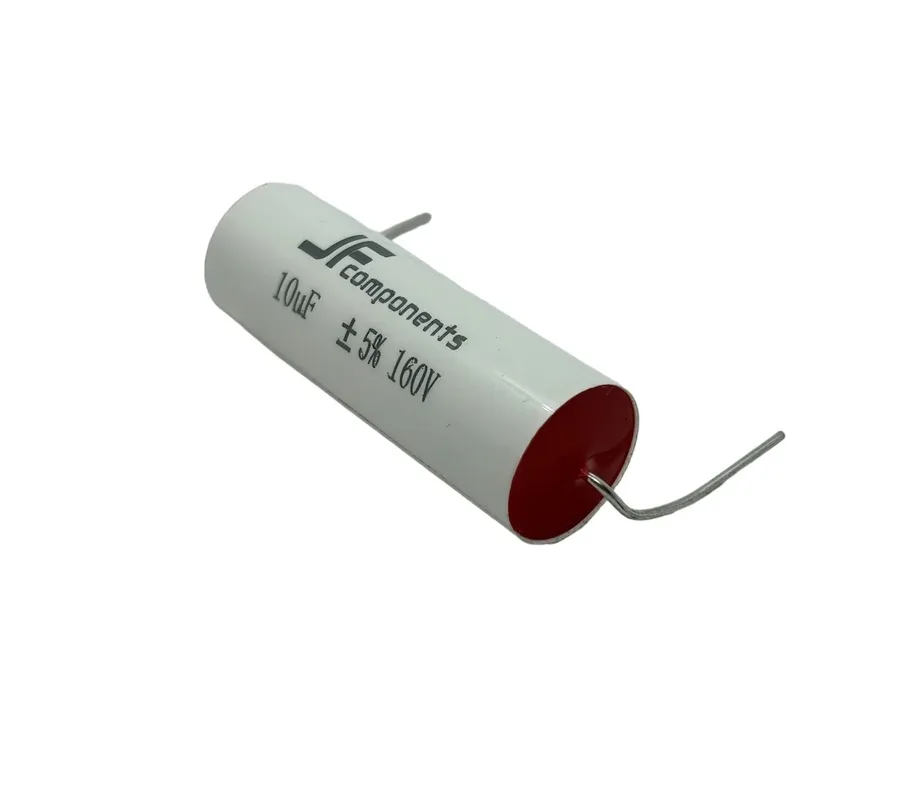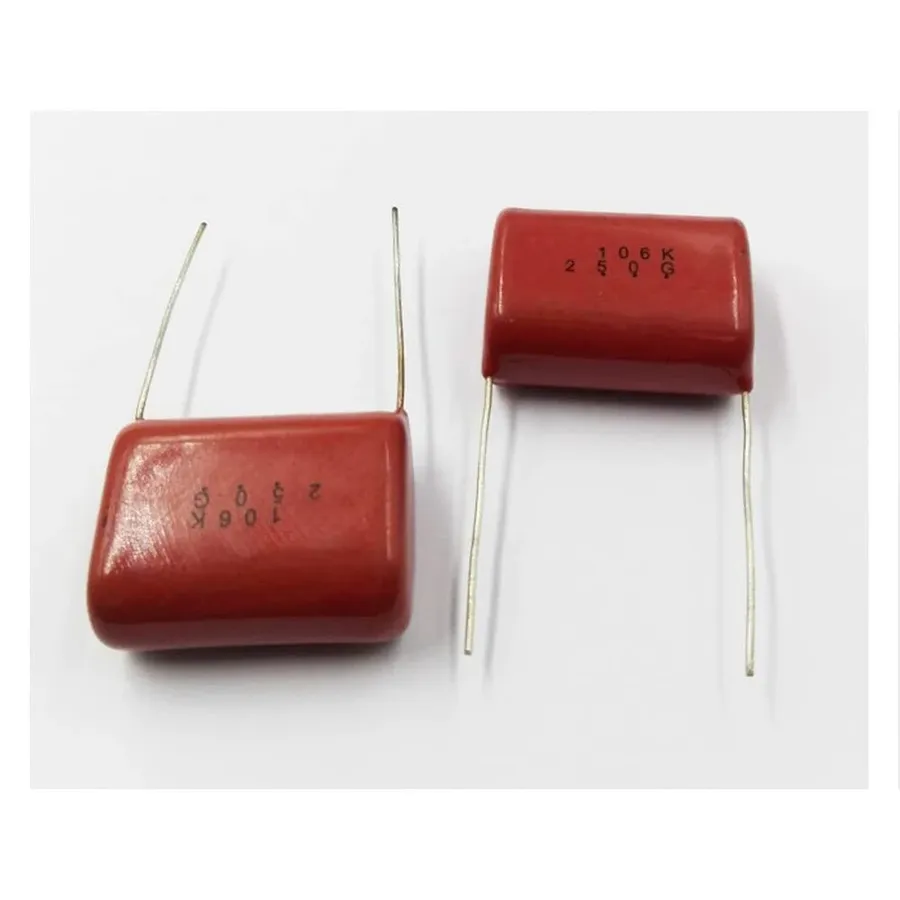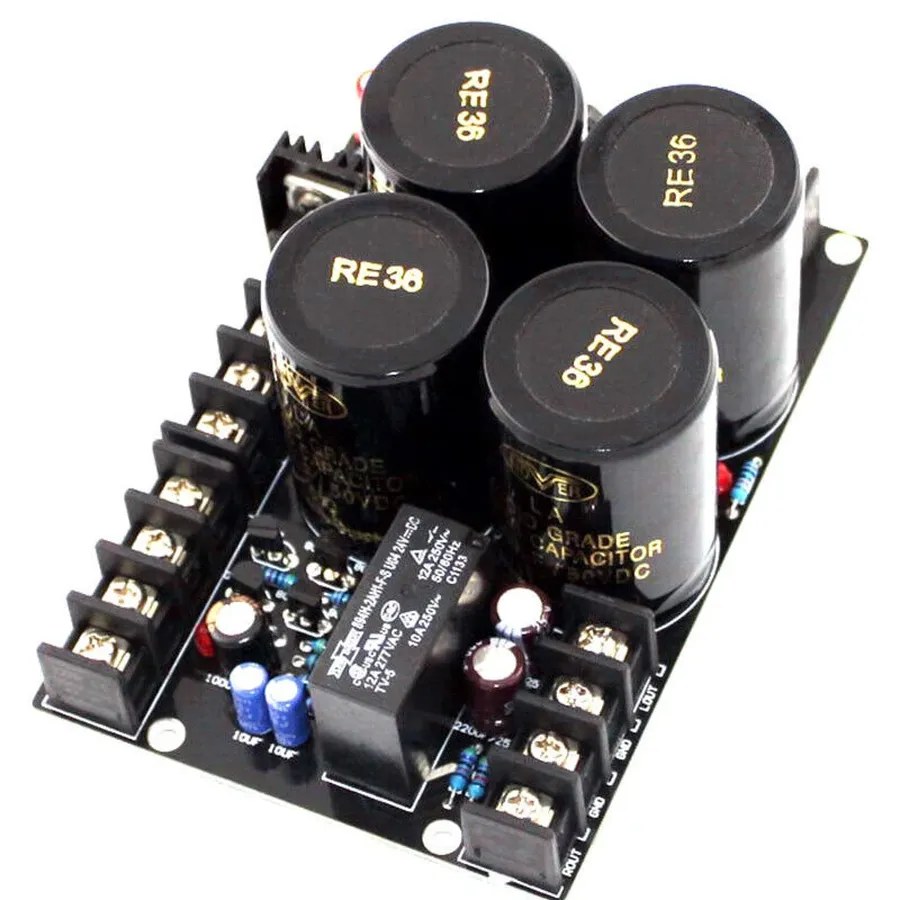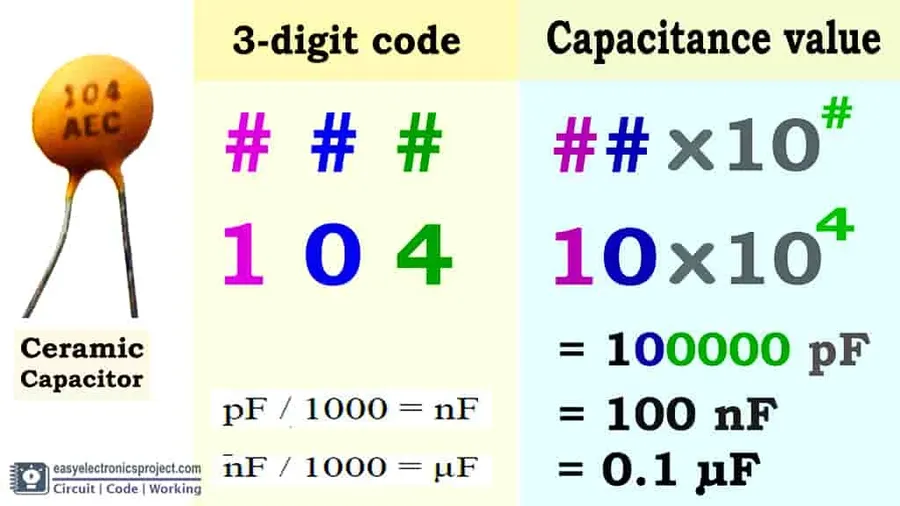Understanding the Versatile 10uF Capacitor: Types, Uses, and Selection

In the intricate world of electronics, the humble 10uF capacitor plays a crucial role, much like a tiny reservoir that stores and releases energy. From smoothing out voltage fluctuations in power supplies to enabling delicate filtering in audio circuits, this seemingly small component is vital. This article will delve into the characteristics of the 10uF capacitor, examining its diverse types, applications, and selection criteria, empowering you to make informed decisions in your electronic projects.
What is a 10uF Capacitor and its Basic Function?

A 10uF capacitor is a fundamental electronic component characterized by its ability to store 10 microfarads (10 x 10⁻⁶ farads) of electrical charge. This capacity to store charge makes it a critical element in various circuits, performing functions such as filtering, energy storage, and timing, distinct from resistors that impede current flow and inductors which store energy in a magnetic field. The '10uF' designation refers specifically to its capacitance, a measure of how much charge it can store at a given voltage.
Different Types of 10uF Capacitors: Electrolytic vs. Ceramic vs. Film

10uF capacitors, while sharing a common capacitance value, come in various types, each with distinct characteristics, advantages, and suitable applications. The primary types are Electrolytic, Ceramic, and Film capacitors. Understanding their differences is crucial for selecting the appropriate component for a given electronic circuit. This section details these key distinctions, providing a comprehensive guide for design and application.
| Feature | Electrolytic | Ceramic | Film |
|---|---|---|---|
| Structure | Uses an electrolyte (liquid or solid) as one electrode, separated by a thin oxide layer. | Uses a ceramic dielectric material, typically in a multi-layered structure. | Uses a thin plastic film as the dielectric material. |
| Capacitance Range | Generally high, suitable for large charge storage. | Typically low to medium, good for high-frequency applications. | Medium range, often used in precision circuits. |
| Voltage Ratings | Moderate to high, typically up to several hundred volts. | Lower, generally ranging from a few volts to several hundred. | Moderate to very high, suitable for high-voltage applications. |
| Advantages | High capacitance per volume, cost-effective for bulk energy storage. | Low cost, small size, low ESR, excellent high-frequency performance. | High precision, excellent temperature stability, low loss, good long-term reliability. |
| Disadvantages | Polarized (must be installed correctly), shorter lifespan, higher ESR, sensitive to temperature. | Capacitance varies with voltage, temperature, and time. Prone to cracking, may have microphonic effects. | Larger size, higher cost compared to ceramics, more sensitive to humidity. |
| Applications | Power supply filtering, decoupling, energy storage, smoothing. | High-frequency decoupling, signal filtering, bypass capacitors. | Precision timing circuits, audio coupling, analog signal processing. |
| Typical Frequencies | Low to moderate frequencies. | High frequencies and RF applications. | Low to high frequencies, depending on film material. |
| ESR (Equivalent Series Resistance) | Higher ESR compared to ceramic and film capacitors. | Very low ESR. | Low ESR. |
Understanding 10uF Capacitor Voltage Ratings and Tolerances
The voltage rating and tolerance of a 10uF capacitor are critical parameters that directly influence its safe and effective operation within an electronic circuit. Choosing a capacitor with an inappropriate voltage rating or tolerance can lead to component failure, circuit malfunction, or even safety hazards.
Voltage Rating: This specifies the maximum DC voltage that a capacitor can withstand continuously without risking damage or failure. Exceeding this rating can degrade the capacitor's dielectric material, leading to reduced capacitance, increased leakage current, or catastrophic failure. The rated voltage is typically marked on the capacitor body or its packaging. It's crucial to choose a capacitor with a voltage rating that is higher than the maximum voltage expected in the circuit, providing a safety margin. A common rule of thumb is to choose a capacitor with a voltage rating at least 20% higher than the maximum expected voltage.
Tolerance: This parameter indicates the acceptable deviation of the actual capacitance value from the nominal value (10uF in this case). Tolerance is usually expressed as a percentage (e.g., ±5%, ±10%, ±20%) or a letter code. For example, a 10uF capacitor with a ±10% tolerance could have an actual capacitance value ranging from 9uF to 11uF. The impact of tolerance on circuit performance depends on the application. In timing circuits or high-precision applications, tight tolerance is critical for predictable operation. For less sensitive applications, such as power supply decoupling, wider tolerances may be acceptable. Capacitors with tighter tolerances are generally more expensive.
Consequences of Improper Selection: Using a capacitor with a voltage rating below the circuit's requirements can result in dielectric breakdown, causing the capacitor to short circuit, which may result in damage to the capacitor itself and other circuit components. Also, using a capacitor with incorrect tolerance can lead to unpredictable circuit behavior and potentially cause system malfunction. Therefore, it is important to consider both voltage rating and tolerance when selecting a 10uF capacitor.
Common Applications of 10uF Capacitors in Electronics

10uF capacitors are integral components in numerous electronic applications, leveraging their ability to store and release electrical energy. They are particularly well-suited for tasks such as power supply filtering, audio signal coupling, timing circuits, and motor starting, each of which benefits from their specific electrical characteristics. Their role in smoothing voltage fluctuations, passing AC signals while blocking DC, establishing precise timing intervals, and providing starting torque for motors highlights their versatility in electronics design.
Below is a breakdown of common applications:
- Power Supply Filtering
In power supplies, 10uF capacitors are used to reduce voltage ripple. They store charge when the voltage is high and release it when the voltage drops, which smooths out the DC output. This stabilizes the power delivered to the circuitry, enhancing the performance and extending the lifespan of electronic devices. For example, in a basic DC power supply, a 10uF capacitor placed across the output terminals helps to filter out unwanted AC components and voltage spikes, providing a more stable DC voltage. - Audio Signal Coupling
In audio circuits, 10uF capacitors function as coupling capacitors, which block DC signals while allowing AC signals to pass through. This prevents DC bias from interfering with subsequent stages of an amplifier. Audio signals are inherently AC, with DC components potentially causing distortion or damage. A 10uF capacitor allows the alternating current audio signal to pass through while blocking the DC voltage, ensuring a clean and clear audio output. For instance, in the pre-amplifier stage, a 10uF capacitor might be used to connect stages, maintaining the integrity of the audio waveform without introducing DC offsets. - Timing Circuits
10uF capacitors are frequently employed in timing circuits, where their charge and discharge characteristics set specific time constants. When paired with a resistor, these capacitors control the duration of timed operations, as seen in oscillator or timer circuits. The time taken for a 10uF capacitor to charge through a resistor is directly proportional to the resistance and capacitance values. Therefore, a 10uF capacitor with a 10kΩ resistor would produce a different timing period than with a 100kΩ resistor. These circuits are common in applications where precise timing is essential, such as in blinking LED circuits or in pulse generation. - Motor Starting
In some single-phase AC motors, 10uF capacitors play a critical role in creating a phase shift in the current supplied to the motor windings. This phase difference creates a rotating magnetic field, which is necessary for the motor to initiate rotation. Without this, the motor would simply hum without starting. For instance, in a small fan motor, a 10uF capacitor provides the initial torque needed for the motor to overcome static inertia and start spinning. This role is primarily found in AC induction motors and split-phase designs.
Selecting the Right 10uF Capacitor: Key Considerations
Selecting the correct 10uF capacitor is critical for optimal circuit performance and reliability. The ideal choice depends on a variety of factors, including the specific application, voltage requirements, operating temperature range, physical size constraints, and desired performance characteristics. Ignoring these factors can lead to component failure, circuit malfunction, or reduced lifespan of the electronic device.
Here's a breakdown of key considerations:
- Application-Specific Needs
The intended use case heavily dictates the type of 10uF capacitor required. For example, a 10uF capacitor used for power supply filtering will have different requirements than one used in an audio coupling circuit. - Voltage Requirements
The capacitor's voltage rating must exceed the maximum voltage expected in the circuit. Operating a capacitor beyond its rated voltage can lead to dielectric breakdown, causing catastrophic failure and potentially damaging other components. Ensure a safety margin is considered during the design phase (typically at least 20% above the maximum operating voltage). A 10uF capacitor rated for 16V should not be used in a 24V circuit. - Temperature Ranges
Capacitors have specified operating temperature ranges. Operating a capacitor outside of its specified range can lead to performance degradation, changes in capacitance value, or premature failure. Check the datasheets to ensure the capacitor can operate safely within your project's temperature conditions. - Physical Size Constraints
Physical dimensions are crucial, especially in compact electronic devices. Consider surface mount (SMD) vs. through-hole components, and ensure that the capacitor fits within the allotted space on your PCB design. The physical size impacts both circuit layout and available space within a project enclosure. - Capacitance Tolerance
Capacitors have a tolerance, which is an acceptable variation from the nominal capacitance value of 10uF. Ensure the tolerance of the capacitor is acceptable for your application. Tighter tolerance capacitors are usually more expensive but essential for time-critical applications. - Performance Characteristics
For high-frequency circuits, properties such as equivalent series resistance (ESR) and equivalent series inductance (ESL) become critical. Low ESR is desirable in filtering applications and high frequency circuits. Also consider the aging characteristics and expected lifetime of the capacitor - Reading Capacitor Markings
Capacitors have markings for key parameters. Learn to interpret these markings to ensure you are selecting the correct component. Markings may indicate capacitance, voltage rating, tolerance, and date of manufacture. Different types of capacitors may have different marking conventions, so referencing datasheets is important.
10uF Capacitor Code and Markings: A Quick Guide

Deciphering the codes and markings on a 10uF capacitor is crucial for proper component selection and circuit functionality. These markings, though often small and seemingly cryptic, convey essential information about the capacitor's specifications, including its capacitance, voltage rating, tolerance, and sometimes even its temperature coefficient. This guide will explain how to interpret these markings, providing clarity and ensuring you choose the correct 10uF capacitor for your application.
Capacitor markings can vary depending on the capacitor type and manufacturer. Here's a breakdown of the common codes and markings you may encounter:
Sometimes, capacitor markings use a numerical coding system, especially for ceramic capacitors. For example, '106' may indicate 10 x 10^6 pF which is equivalent to 10uF. Always refer to the manufacturer's datasheet when dealing with unfamiliar codes.
When markings are unclear, it is crucial to exercise caution. If the markings are incomplete or faded, it is advisable to: 1. Check the circuit diagram or documentation to verify the correct capacitor specifications, if available. 2. Try to identify the manufacturer's logo or a unique marking and search the manufacturer’s database or use online capacitor marking decoders. 3. If uncertain, err on the side of caution and use a capacitor with a higher voltage rating than expected. 4. In cases of ambiguity, it is always best practice to use a multimeter and measure the actual capacitance. If the capacitance is not within tolerance, it indicates a faulty capacitor.
Frequently Asked Questions About 10uF Capacitors
This section addresses common queries regarding 10uF capacitors, providing both technical insights and practical advice to enhance understanding and application.
- What does '10uF' mean on a capacitor?
The designation '10uF' indicates that the capacitor has a capacitance of 10 microfarads. A farad (F) is the base unit of capacitance, which quantifies a capacitor's ability to store an electrical charge. One microfarad (uF) is equal to one millionth of a farad, and 10uF represents a charge storage capacity of ten millionths of a farad. This value is crucial for determining how a capacitor will behave in a circuit. - What happens if I use a capacitor with a higher uF rating than specified?
Using a capacitor with a higher uF rating than specified can lead to several outcomes, depending on the circuit. In some cases, the circuit may operate as expected, with the increased capacitance resulting in prolonged charge times or different filtering characteristics. However, in other cases, especially in timing or high-frequency circuits, using a significantly higher uF value can cause the circuit to malfunction, have a reduced frequency response, or potentially damage other components. The key is to match the uF rating to the circuit's designed requirements. - Can I replace a lower uF capacitor with a 10uF capacitor?
Replacing a lower uF capacitor with a 10uF capacitor is generally not recommended unless the circuit is designed to tolerate the higher capacitance. Doing so can alter the timing, filtering, and other performance characteristics of the circuit. In filtering applications, it may lower the cutoff frequency of a low-pass filter, while in timing circuits it will slow down the timing, and in other applications it may cause instability and poor performance. While the circuit may still function, it may not operate within its optimal parameters. Always replace capacitors with those of the same or very similar capacitance unless a specific modification is intended and understood. - What is the significance of the uF value in a capacitor?
The uF value, or microfarad value, is paramount as it determines the capacitor's electrical charge storage capacity. This value dictates the amount of charge the capacitor can store for a given voltage, thereby influencing how the capacitor behaves in the circuit. The uF value is crucial in applications like power filtering, where a larger capacitance is used to smooth voltage variations, and timing circuits, where the capacitance and resistance control the timing of the circuit. Correct uF selection is essential for the desired functionality and optimal circuit performance. - What considerations should be made when replacing a 10uF capacitor?
When replacing a 10uF capacitor, it’s crucial to consider not just the capacitance, but also the voltage rating, the temperature rating, the tolerance, and the type of capacitor. You need to match or exceed the voltage rating to prevent failure, and match the capacitor type to ensure proper functionality in the given application. Temperature ranges should also be considered, as a capacitor used outside its temperature specification may result in unreliable or unpredictable behavior. The physical dimensions of the replacement capacitor must also fit within the circuit’s design constraints. If the capacitor is being used in a precision circuit, the tolerance should be equal to or better than the existing capacitor being replaced. Failure to consider these factors may lead to unreliable operation and premature component failure. - Can a 10uF electrolytic capacitor be replaced with a 10uF ceramic capacitor?
Replacing a 10uF electrolytic capacitor with a 10uF ceramic capacitor is possible in some cases, but it depends on the circuit's requirements. Electrolytic capacitors are generally polarized (meaning they have a positive and negative terminal and must be installed with the correct orientation), have high capacitance-to-size ratios, and are often used in power filtering and coupling applications. Ceramic capacitors are non-polarized, have lower capacitance-to-size ratios, and are often used in higher frequency circuits. They have better frequency response than electrolytic capacitors. If the application is not sensitive to these factors, a replacement can be made. However, if the application requires the specific characteristics of an electrolytic capacitor, then a ceramic replacement may result in reduced circuit performance. It is important to understand the application and choose the appropriate capacitor based on its function in that particular circuit.
10uF Capacitor Comparison Table: Key Specs and Uses
A comparative analysis of 10uF capacitors across different types—Electrolytic, Ceramic, and Film—is essential for selecting the optimal component for specific applications. This section details the key specifications and typical use cases, providing a practical guide for engineers and hobbyists.
| Feature | Electrolytic 10uF | Ceramic 10uF | Film 10uF |
|---|---|---|---|
| Voltage Range | Low to Medium (e.g., 6.3V to 450V) | Low to Medium (e.g., 6.3V to 100V) | Medium to High (e.g., 50V to 1000V) |
| Temperature Range | -40°C to +105°C (typically); High temp options avail | -55°C to +125°C (Typically) | -55°C to +150°C |
| Frequency Response | Lower, Suitable for DC & low-frequency applications | Excellent, Suitable for high-frequency applications | Good, Suitable for audio and other medium-frequency applications |
| Size | Generally larger | Small, available in SMD packages | Moderate to larger, depending on voltage rating |
| Price | Cost-effective | Low to moderate cost | More expensive |
| Best Use Cases | Power supply filtering, decoupling, smoothing, and bulk storage | High-frequency circuits, decoupling in digital circuits, bypass | Audio circuits, precision timing, high-reliability applications |
| Polarity | Polarized, requires correct orientation in circuit | Non-Polarized | Non-Polarized |
| ESR (Equivalent Series Resistance) | Higher ESR | Lower ESR | Lower ESR, very stable |
| Tolerance | Higher tolerance | Lower tolerance | Typically tighter tolerance |
The 10uF capacitor, a seemingly simple component, is a cornerstone of modern electronics. Whether it's the stability of a power supply, the clarity of an audio signal, or the smooth operation of a motor, the 10uF capacitor plays a critical role. By understanding its diverse types, key parameters like voltage and tolerance, and practical applications, you're better equipped to select and use this essential component effectively. As technology advances, the 10uF capacitor will continue to be a fundamental element in innovative electronic designs. This understanding will lead to improved design, higher performance and more reliable electronics.
 AnyPCBA
AnyPCBA